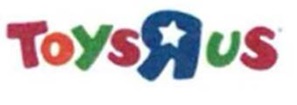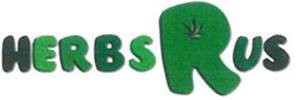
Publication
Supreme Court of Canada rejects narrow interpretation of disclosure standard for “material changes”
The Supreme Court of Canada has released its long-awaited decision on Lundin Mining Corp. v Markowich, dismissing the issuer’s appeal


Canada | Publication | July 23, 2020
Trademark owners often face challenges when attempting to enforce against non-confusing third-party trademark use. In many cases, a third party may be using a similar trademark, or a trademark with the same “look and feel,” but in a completely different consumer space such that consumer confusion is unlikely. A recent Federal Court decision has arguably extended the ability of trademark owners to take action in such circumstances, by expanding the extent to which “depreciation of goodwill” claims apply to a third party’s depreciative use of non-identical trademarks.
“Depreciation of goodwill’ is codified in Section 22 of Canada’s Trademarks Act, which prohibits use of "a trademark registered by another person in a manner that is likely to have the effect of depreciating the value of the goodwill attaching thereto.” Importantly, consumer confusion is not a necessary element of a Section 22 claim – and depreciation of goodwill may be found even if the parties market to different consumer groups. A plain language reading of Section 22 suggests that a depreciation claim is only useful against third-party use of the trademark as registered, i.e., the parties must be using identical trademarks; however, Canadian jurisprudence has been somewhat inconsistent on this point.
The leading “depreciation of goodwill” case is Veuve Clicquot Ponsardin v Boutiques Cliquot Ltée, (Veuve Clicquot). In Veuve Clicquot, the Supreme Court of Canada found that a depreciation claim could apply where a third party’s use of a mark is “sufficiently similar” to the registered mark to evoke in consumers a “mental association” of the two marks that is likely to depreciate the value of the goodwill attaching to the registered mark.
The court seemed wary about over-extending the availability of the depreciation remedy – recognizing it may be considered a “super weapon,” which in the interests of fair competition needs to be kept in check. While the court felt a mere misspelling of a registered trademark (e.g., Cliquot/Clicquot or Klenex/Kleenex) would be “sufficiently similar,” it did not consider “Cliquot” to be use of the registered trademark “Veuve Clicquot.”
The Federal Court of Appeal’s subsequent treatment of Veuve Clicquot has been inconsistent:
Most recently, the Federal Court appears to have expanded the application of the depreciation remedy to confirm it includes trademarks that are clearly not the same, but which nonetheless have the same “look and feel” or same “striking elements” as the registered mark. In Toys “R” Us (Canada) Ltd v Herbs “R” Us Wellness Society (link to case) (Herbs R Us), the Federal Court granted Toys R Us judgement against a Vancouver-based cannabis boutique and dispensary operating as “Herbs R Us.” Notably, the Federal Court granted a permanent injunction, damages and costs to Toys R Us based on its finding that the Herbs R Us branding, while not considered confusingly similar to the Toys R Us trademark, nevertheless depreciated its goodwill. The parties’ respective logos are depicted below:


The Federal Court first dealt with Toys R Us’ claims of statutory passing off and trademark infringement. In dismissing these claims, the Federal Court held that Toys R Us had failed to establish a reasonable likelihood of confusion between the parties’ respective trademarks. The court considered there to be a “high degree of resemblance” between the two marks, noting the very similar overall commercial impression of the marks; however, the court ultimately held that it would be “unlikely in the extreme” for an average Canadian consumer, even a casual one somewhat in a hurry, to conclude that a well-known toy retailer had branched out into cannabis dispensary services.
In turning to the depreciation of goodwill claim, the court held that Toys R Us had satisfied all four elements of the modern test set out in Veuve Clicquot:
As a result, the court granted an injunction against further use of “Herbs R Us” and awarded Toys R Us “nominal damages” for $15,000 and costs of $15,000. The court did not believe Herbs R Us’ conduct, which included the deliberate evocation of the Toys R Us logo among other alleged behavior, was sufficient to warrant punitive damages.
This decision is one of only a few instances where a depreciation of goodwill claim has been successful in Canadian jurisprudence (outside of counterfeiting cases, where depreciation of goodwill is readily assumed). Depreciation of goodwill claims often play second fiddle to the more common trademark infringement or actions in passing off; however, the Federal Court’s decision in Herbs R Us may increase the likelihood of such claims appearing in Canadian courts in the future. Takeaways from Herbs R Us relevant to trademark owners and practitioners include:
On a procedural note, the court rejected large portions of a solicitor’s affidavit sworn by an articling student of Toys R Us’ legal counsel. While this did not appear to materially change the outcome, this is a cautionary reminder for solicitors to be wary of Rule 82 of the Federal Courts Rules, SOR/98-106, which provides that a solicitor shall not both depose to an affidavit and present argument to the court based on that affidavit without leave of the court, which the Federal Court has repeatedly held extends to articling students and other employees of that lawyer’s firm.

Publication
The Supreme Court of Canada has released its long-awaited decision on Lundin Mining Corp. v Markowich, dismissing the issuer’s appeal

Publication
Bill C-15, An Act to implement certain provisions of the budget tabled in Parliament on November 4, 2025, has been introduced in the House of Commons and has completed its second reading.

Publication
In November 2025, the Ontario Court of Appeal released a decision quashing a summons issued by an investigator appointed by the Ontario Securities Commission, holding that the summons was unconstitutionally overbroad.
Subscribe and stay up to date with the latest legal news, information and events . . .
© Norton Rose Fulbright LLP 2025